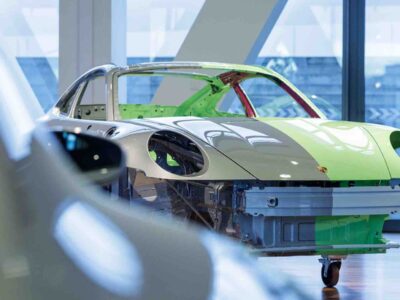The rise of electric vehicles (EVs) in the U.S. has everyone searching for their next clean car. However, not everyone can afford a car or has the desire to purchase one. There are a growing number of alternative EVs available, but the one that is becoming popular is the electric skateboard. Numerous skateboard companies and startups have begun manufacturing these exciting and affordable e-boards, but just how sustainable are they?
Much like electric scooters and bicycles emerging as sustainable EV options for city dwellers, e-boards are a viable transportation choice for the future. The boards run on rechargeable lithium-ion batteries, similar to the ones found in an electric car. You could zoom through your neighborhood in just a few hours of charging. E-boards are great for city living because they are compact and can be easily stowed in cramped spaces. You can also weave through sidewalks and foot traffic while reducing emissions. You might struggle to get a wider vehicle like an e-bike or automobile through lanes of traffic, but an e-board eliminates those problems. If the battery runs out, you can still manually push it like a traditional skateboard.
The range varies per charge based on brand, while top speeds can reach 25 miles per hour. You could quickly go to the corner store, pick up a La Croix, skate to the park, and head home without having to recharge your battery.
While an electric skateboard doesn’t emit greenhouse gases while in use, the environmental impact is typically felt in its production. Since the 1990s, skateboards have been made from Canadian maple wood, causing deforestation for timber.
To counter this, companies like Evolve Skateboards are testing bamboo as a more sustainable material. Since bamboo is invasive to the U.S., it makes sense to use it for decks — another board name. It’s also very malleable and strong enough to withstand significant impact. Some e-boards are also made of carbon fiber, making them durable and lightweight, like Hadean Series’ newest options.
The other parts of a skateboard, such as wheels and trucks, are a bit trickier regarding sustainability. However, skateboarding companies are finding unique ways to reduce waste. Satori Movement started a program to recycle old skateboard wheels and trucks for new equipment. Satori’s Re-Life Wheels are made from recycled skateboard wheels donated by skaters everywhere. Trucks are difficult to recycle due to damage they will likely sustain, but some brands repurpose old skateboard trucks into craft jewelry and even bottle openers. It goes a long way when old parts can be kept out of landfills, repurposed, or recycled. Most of this gear is highly durable too, so it won’t break down or become faulty quickly.
The market for electric skateboards is still relatively small, but consumer trends show that this could be a profitable business venture.
A market study conducted by Grand View Research predicts that the global skating industry will be worth $2.4 billion by 2025.
That’s a massive profit margin for a relative niche sport. With the rise of EVs, all types are considered, including non-traditional versions. Since skateboarding can be picked up by just about anyone and is a great form of exercise, an e-board is perfect for those trying to keep a low carbon footprint while getting out and enjoying the outdoors.
Evolve and Satori are just two e-board producers, but prices vary by brand and materials. Evolve’s Hadean series costs between $2,100 and $2,800 for a bamboo board; you can find deals on other boards on websites like Amazon or check resales. Professional longboard James Mason has tips for using a board without getting hurt.





